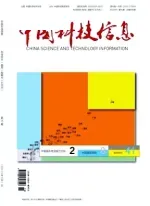铂镍正八面体让燃料电池省铂90%
高效耐用的催化剂是燃料电池领域取得突破的关键。最近,德国科学家研发出一种铂镍纳米粒子,用其作催化剂,可将燃料电池中铂的用量减少90%。研究还发现,新纳米粒子的功能由其几何形状和原子结构决定。发表在最新一期《纳米!材料学》杂志上的最新研究将有助于科学家们提高催化剂的性能。
氢动力燃料电池除产生电能外,唯一的副产品是水,因此被看作传统内燃机的环保替代品。但这种燃料电池的电极(化学转化过程在此发生)需要用到大量“身价不菲”的铂。如果没有铂作为催化剂,很难获得必需的转化效率,因此,铂正成为发展氢燃料电池的“拦路虎”。
科学家们解释道,氢燃料电池的催化过程只发生在铂表面,而铂纳米粒子可增加铂表面积,既节省材料又能提高电极效率,1公斤纳米粒子的表面积相当于几个足球场。另外,让铂和镍或铜等廉价金属相混合,还可以节省更多铂。
在这一思路指导下,德国于利希研究中心(FZJ)和柏林工业大学的科学家成功研发出高效的铂镍催化剂粒子,用于将氢气和氧气转变成水,其中铂仅为以前用量的1/10。新催化剂不由以前广泛使用的圆形纳米粒子,而由铂—镍合金的正八面体纳米粒子组成,正八面体表面的铂镍原子拥有独特的排列方式,能显著提高氢气和氧气生成水的化学反应速度。
研究人员还使用德国恩斯特鲁斯卡电子显微学与电子谱学中心(ER-C)的超高清电子显微镜,对新纳米粒子的原子结构进行了观察。ER-C的马克!海根博士解释道:“我们发现,镍和铂原子并非均匀地分布在纳米正八面体表面,这可以增加其反应活性,不过会减少其寿命。”
柏林工业大学的皮特!斯特拉瑟教授表示:“新研究告诉我们,为获得最优的催化效果,催化剂粒子合适的几何形状与其组成及大小一样重要,我们可借用这一发现来改进用来储能的功能性材料尤其是催化剂的性能。”
Platinum-nickel nano-octahedra catalyst for fuel cells save 90% platinum
Efficient,robust and economic catalyst materials hold the key to achieving a breakthrough in fuel cell technology.Scientists from Jülich and Berlin have developed a material for converting hydrogen and oxygen to water using a tenth of the typical amount of platinum that was previously required.With the aid of state-of-the-art electron microscopy,the researchers discovered that the function of the nanometre-scale catalyst particles is decisively determined by their geometric shape and atomic structure.This discovery opens up new paths for further improving catalysts for energy conversion and storage.
The results have been published in the current issue of the respected journal Nature Materials.
Hydrogen-powered fuel cells are regarded as a clean alternative to conventional combustion engines,as,aside from electric energy,the only substance produced during operation is water.At present,the implementation of hydrogen fuel cells is being hindered by the high material costs of platinum.Large quantities of the expensive noble metal are still required for the electrodes in the fuel cells at which the chemical conversion processes take place.Without the catalytic effect of the platinum,it is not currently possible to achieve the necessary conversion rates.
As catalysis takes place at the surface of the platinum only,material can be saved and,simultaneously,the efficiency of the electrodes improved by using platinum nanoparticles,thus increasing the ratio of platinum surface to material required.Although the tiny particles are around ten thousand times smaller than the diameter of a human hair,the surface area of a kilogram of such particles is equivalent to that of several football fields.
Still more platinum can be saved by mixing it with other,less valuable metals,such as nickel or copper.Scientists from Forschungszentrum Jülich and Technische Universität Berlin have succeeded in developing efficient metallic catalyst particles for converting hydrogen and oxygen to water using only a tenth of the typical amount of platinum that was previously required.
The new catalyst consists not of the round nanoparticles that were previously in widespread use,but of octrahedral-shaped nanoparticles of a platinum-nickel alloy.The researchers discovered that the unique manner in which the platinum and nickel atoms arrange themselves on the surfaces of these particles serves to optimally accelerate the chemical reaction between hydrogen and oxygen to form water.Round or cubic particles,on the other hand,have different atomic arrangements at the surface and are therefore less effective catalysts for the chemical reaction,something which would have to be compensated by using increased amounts of noble metal.
The way in which the lifecycle of the catalysts depends on and can be optimized by their atomic composition was the subject of the research team's investigation,which made use of ultrahigh-resolution electron microscopy at the Ernst Ruska-Centre (ER-C),a facility of the Jülich Aachen Research Alliance."A decisive factor for understanding the life-cycle of the catalysts was the observation that nickel and platinum atoms prefer not to be evenly distributed at the surface of the nano-octahedra," explains Dr.Marc Heggen from ER-C and the Peter Grünberg Institute at Forschungszentrum Jülich."Although this is advantageous for reactivity,it limits lifetime."
To identify the locationof each element with atomic precision,the researchers used a method in which the electron beam of one of the world's leading ultrahigh-resolution electron microscopes is finely focused,sent through the specimen and,by interactions with the specimen,loses part of its energy.Each element in the specimen can thus be identified like a fingerprint.Conventional electron microscopes are not capable of detecting such chemical signatures with atomic resolution.
"This pioneering experimental work provides direct evidence for the fact that the choice of the correct geometric shape for the catalyst particles is as important for optimizing their function as the choice of their composition and size," says Prof.Peter Strasser from Technische Universität Berlin."This provides researchers with new possibilities for further improving functional materials,especially catalysts,for energy storage." The latest experiments from Strasser's research group indicate that substantial increases in efficiency may also be possible for the reaction splitting water to produce oxygen in electrolysers,for which the even more expensive noble metal iridium is used.

